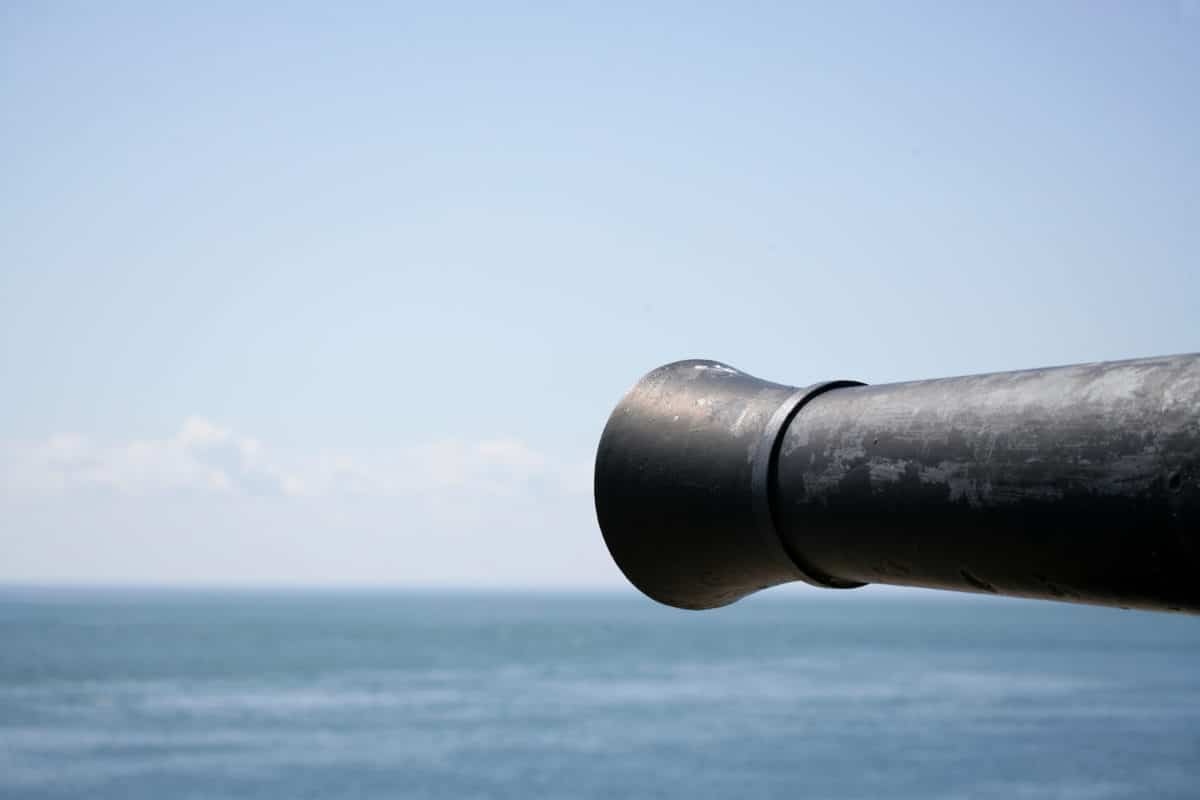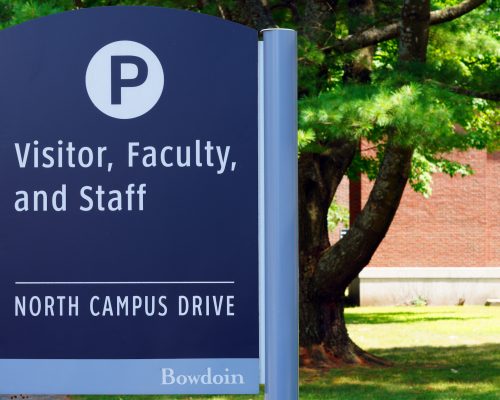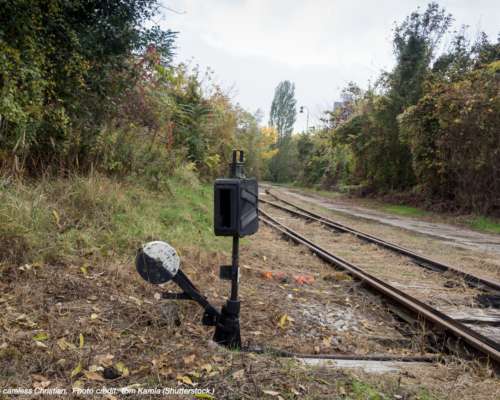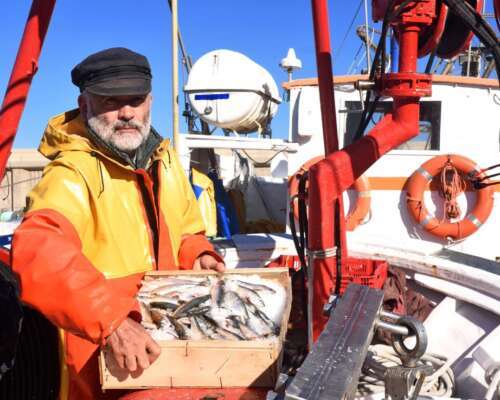The Seven Years’ War is not very well known in this country. Winston Churchill called it “The first World War” since it was actually fought on five different continents. It’s difficult to point to a single event that historians agree was the casus belli. Was it the Prussian invasion of Saxony in Europe? A dispute over the boundaries of Arcadia? A skirmish, perhaps, in western Pennsylvania between British forces who were badly-led by a twenty-two-year-old officer named George Washington in which a French envoy was killed? Whatever the reason, it happened. And Fort William Henry paid the price.
The French & Indian War
Here in America, the Seven Years War is better known as the French and Indian War. In narrower, simpler terms, England and France contended with each other over the New World, with France claiming Canada and parts elsewhere, and Britain defending her rights to her thirteen colonies. The French didn’t trust England’s intentions. France believed that England’s goal was to conquer Canada, using the Hudson River, Lake George and Lake Champlain to move their armies ever northward to Canada’s doorstep (Hays 143.) Control over the fur trade fueled French expansion in the New World, while wealthy colonial landowners unhappy with tobacco prices pushed for westward movement in middle America. Both countries had Indian allies who were aligned with one of these two major world powers, like pawns in a game of chess. In this game of chess, England built Fort William Henry in order to checkmate France.
Fort William Henry
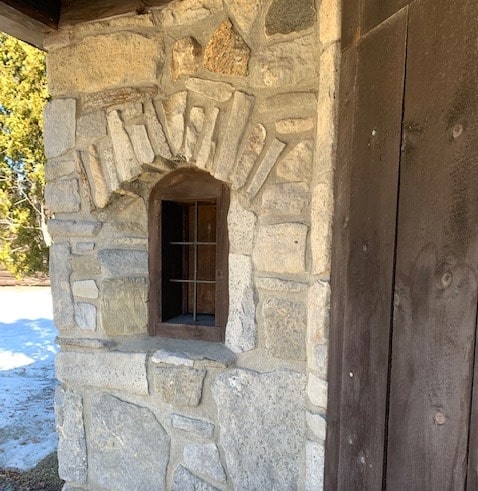
Presumably Fort William Henry was designed to stop French forces from expanding southward, but it was not constructed for defense but rather for offensive purposes (Hays 143.) In September 1755, plans were approved to start immediate construction of a fort named William Henry, to be build on the southern shores of Lake George in upstate New York. A month later, French engineers began construction on a fort on the northern shore of Lake George–sometimes stated the southern edge of Lake Champlain–either is correct, 32 miles from Fort William Henry. This Fort eventually came to be known as Ticonderoga. Once the French garrison had a full complement of forces, France attacked Fort William Henry. The attack is more or less accurately portrayed (if embellished) in James Fennimore Cooper’s book “The Last of the Mohicans.” The book was written seventy years after the French Commander, the Marquis de Montcalm de Saint-Veran Montcalm defeated the British and colonials at Fort William Henry, led by Lt Col George Monro. For two centuries after the attack, the rubble of the original fort remained. In the 1950s, however, a private corporation secured the land and eventually restored the fort on its original site, building a hotel and conference center adjoining it. Today, Fort William Henry occupies a commanding presence on the Lake George promenade, ever facing the northern shores, a grim reminder of the French and Indian War.
The tour of Fort William Henry
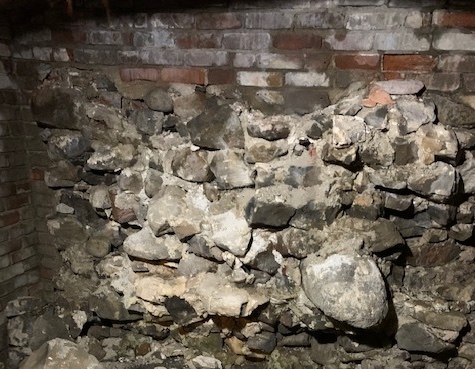
Two hundred and sixty-six years later, Dee and I visit Fort William Henry and take the tour. We only see a small portion of the interior of the fort as the central courtyard is not available, perhaps because it is not yet the tourist season. Only one part of the original fort remains, the remnants of a fire place. The rest of the fort is built more or less to scale and as authentic as a replica can be. We saw several rooms of artifacts exhumed during the excavation of the monument, plus life size static displays of uniforms, paintings, biographies of the belligerents and so on. In the basement of the fort, we were shown surgical instruments and briefed on common surgical procedures performed back then, and which were explained in greater detail than some visitors would have liked. Our guide pointed out the compartments where the stores back then were secured, as well as the common weapons that were used. Afterwards and outside, we were treated to the discharge of an authentic, period-specific musket, whose discharge was as thunderous in real life as it was when portrayed in the movies. Our escort was fairly knowledgeable about the fort, and I questioned him in depth about several different points when I could. Was this replica on the original site of the 18th century Fort? It was, plus or minus seven feet. Where did the massacre portrayed in the movie take place? All along the trail, he replied. Was the garrison commander really someone called Lt Colonel Monro as the movie portrays? “Yes.”
Lt. Colonel George Monro
Lt Colonel Monro (spelled Munro in some records), was the garrison commander of Ft William Henry. He had thirty-nine years of military service, yet he was no more than a mid-level field grade officer. His defensive plan to counter the French was essentially to “hunker down,” leading some stategists to conclude that “while he had great personal courage and bravery, he was extremely short of military ability” (Jarrett 387) Yet, he could be merciless, too. Only days before the surrender, Dr. I. Minnis Hays, an unfortunate defender of the fort but fortunate enough to survive says that “Col Monro published his orders to all in the fort that if any person proved cowardly or offered to advise giving up the Fort, that he should be immediately hanged over the walls of the Fort and he did not doubt that but the officers in the garrison would stand by him to the last . . .(Hays 147)”
“. . . the unfortunate Garrison had scarsely cleared the Fort, e’er the voracious Blood-Hounds fell to stripping and plundering them of all their Clothes, Arms, and Baggage, killing and scalping every one that resisted, not even sparing the Wounded or Sick. . .”
The Boston Gazette and Country Journal, September 5, 1757
The siege of Fort William Henry
The siege of Fort William Henry began on August 3, 1755, when the French blockaded the road that led to the nearby British-held Fort Edward. Another eyewittness says that as the sun rose that morning, “the enemy were seen coming from behind a Point, on the West side of the Lake; at about three miles distance; stretching their line of floats, or Battoes, and Bark Canoes; almost across to give us an idea of their strength: and to make their appearance and approach, the more dreaded. . .” (Hays 146.) Six days after this event, the fort surrendered. Altogether, there were approximately 8,000 French soldiers with Canadians and Indian allies such as the Ottawa and Delaware tribes, contrasted with 2,300 British and colonial defenders plus their indigenous allies, most notably the Iroquois (whose confederacy included the Mohawks.) Each side had other tribes as supporters depending on which part of the continent the battles were fought, but the indigenous allegiances often shifted in response to who was actually winning the war at the moment.
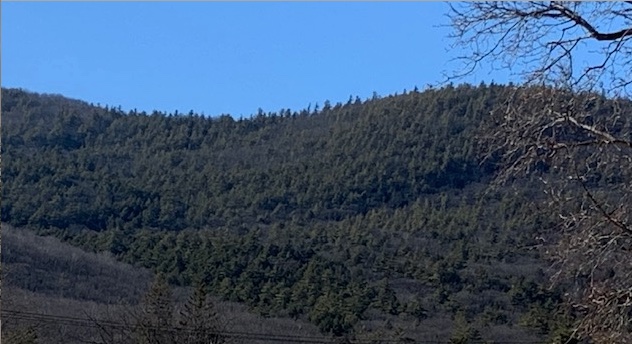
The massacre
After the surrender of Fort William Henry under Montcalm’s generous terms, the column of defeated British soldiers wearily picked their way towards Fort Edwards with the colonial volunteers, plus women and children and the wounded. The French might have been in a celebratory mood, but the Indians were furious! There were not enough spoils of war to placate them, and they felt Montcalm had denied them their share of the loot (particularly scalps.) A certain number of French soldiers were sent along to guard the survivors, but there weren’t enough of them and they apparently decided to look the other way when the Indians attacked the column. The column, including stragglers, was easily several miles long. The wounded were at the back of the column trying vainly to keep up, but were caught and swiftly dispatched by the pursuing Indians along with other soldiers unwilling or unable to fight. Monro and some of his officers foresaw this would happen, and they surrendered personally to Montcalm’s officers rather than join the column. This guaranteed that they were under his personal protection (Ewing and Furnis 314). According to a British “after action” report, “the number killed during the siege did not exceed eighty. The number killed on the road to Fort Edward is uncertain, as many were butchered in the woods and bushes, consequently cou’d (sic) not be all perceived by our people who came away after. Near thirty carcasses, however, were actually seen, and from the frequent stenches they met, [they] had reason to imagine, many more lay scattered about. The number still missing amount to two hundred and fifty (Steele 351.)” More confusing even today are the losses that Montcalm sustained. Said the report: “Ask one Frenchman how many men they had lost [and] he answers, ‘Seven.’ Another, he says ‘two hundred,’ and a third ‘twenty (Steele 351.)'”
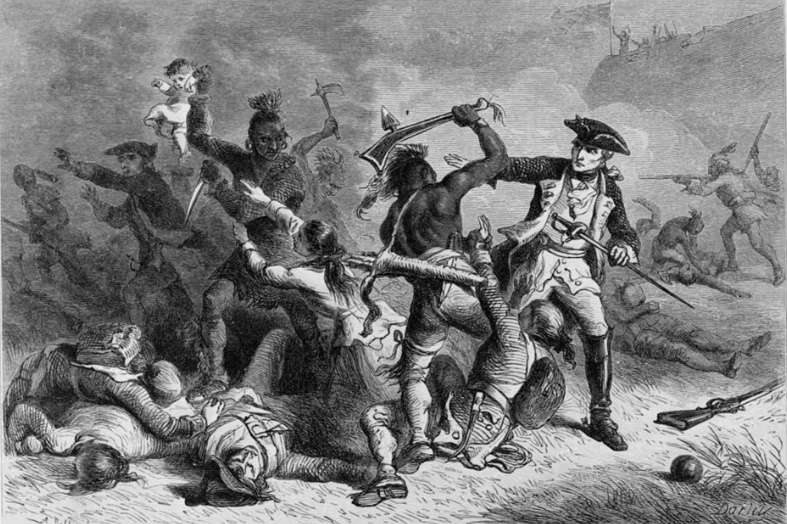
An interesting footnote to this story emerged less than sixty years ago. According to reports:
“In 1965 while excavating for the Holly Tree Motel on Birch Street just off route 9 about a mile below the fort, a makeshift grave site was uncovered including twenty-eight skeletons almost all of which had simply been interred in the raw earth without coffins. Buttons and other artifacts indicated that the remains were all of eighteenth-century persons, mostly soldiers. One male skeleton in particular showed grim evidence of the ferocity of his death. It was headless, and cuts on the cervical vertebrae showed that he had been decapitated.”
Cooper’s book
There are some notable inaccuracies in Cooper’s book. As one example, the massacre scene after the fort fell did not take place at some distance from the fort, but rather closer to the fort than further away as noted above. In fact, after the surrender, a number of native American mercenaries scaled the walls and started killing survivors before the column even formed (Ewing and Furnis 314), tearing clothes off them and seizing items of value. Another difference, this one more glaring, concerns the death of Fort William Henry Lt. Col. George Monro. The garrison commander was not killed on the march to Fort Edwards as the Daniel Day-Lewis movie portrays. He actually survived the ordeal, an angry, broken man and lived an additional three months before dying in Albany, NY of a stroke. His body (heart and all) is buried at Saint Peter’s Episcopal Church Columbarium, Albany, New York.
Room for improvement at the museum
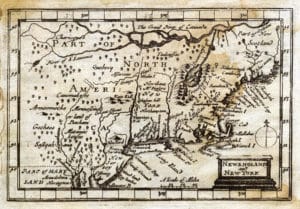
Today, the fort is surrounded by canon and flags of the belligerents. They have several events each year which can be found on the Fort William Henry website. There are a few things to keep in mind if you plan on visiting the fort. One deals with the tours. We and two other couples wandered aimlessly round the outside of the fort fifteen minutes after our scheduled tour began. The signs at the fort and on the literature did not clearly indicate where we should go. I’m not sure where tours begin during the warmer tourist season, but if you visit during late fall, winter, or early spring, go directly to the lobby of the adjoining hotel. It’s as simple as that. The reservation sheet that you print up from the website notes a street address, but good luck with that. Just go to the hotel lobby and tell the desk clerk you are there for the tour. Another thing: The gift shop at the museum is currently being renovated. But the online gift shop is disappointing when compared with that of other historical places. There are only thirteen different items for sale; one is sold out, and two others are for pets. What about offering British, French and Colonial flags of different sizes, books on the war and native American tribes, posters, post cards, movie soundtracks and DVDs, arrowheads, t-shirts, etc.? Perhaps an arrangement with Warner Brothers to recreat and sell movie posters, half sheets and t-shirts could be arranged. The governing board might contract this out to a recognized, successful vendor whereby they could increase their revenue and provide additional satisfaction to their patrons. Many Canadians visit the Fort because it is important to the history–and freedom–of their country as well.
Cast interviews with the actors of the most recent version of the movie can be found here, courtesy of the “Mohican Press.” These interviews are much more specific and insightful that what you might have otherwise read in the tabloids and popular magazines at the time. Fans of the movie will thoroughly enjoy these interviews.
Newspaper account
Following is an original account of the massacre portrayed in the “Last of the Mohicans” movie starring Daniel Day-Lewis. The scene is when the British and colonials, having surrendered Fort William Henry to the French General Montcalm, are attacked in the woods. I’ve tried to leave the spelling and typographical peculiarities intact as they appeared to the reader back then.
T H E No. 127
Boston–Gazette
A N D
C O U N T R Y J O U R N A L
M O N D A Y, SEPTEMBER 5, 1757
M O N T C A L M.
These Articles being finished on both SideS, the French
took Possession of the Fort, and the English (agreeable)
to the Articless) were preparing to move off, when some
Chiefs of the Indians went and accused the French Ge-
neral with having deceived them, in the he had pro-
missed them the Plunder of the English, which they
found they were now deprived of by the capitulation.
And the unfortunate Garrison had scarsely cleared the
Fort, e’er the voracious Blood-Hounds fell to stripping
and plundering them of all their Clothes, Arms, and
Baggage, killing and scalping every one that resisted, not
even sparing the Wounded or Sick, and privatetly car-
rying off Prisoners all such as they could, notwithstand-
ing all the Opposition of the French to the contrary.
Many of the English, seeing their Danger, took to
their Heels and fled; and of this Number upwards of
600 arrived soon after at Fort-Edward, giving out,
that they supposed all who did not escape as they did,
were either massacre’d, or carried off by the Indians :
But, 300 and better, perceiving the Cruelty of the
Indians, chose to surrender themselves : and accord-
ingly returned to the French, who not only protected
them, but did their utmost to rescue such of the others
as were taken, or going to be carried off by the Indi-
ans :
Sources
EWING, WILLIAM S., and J[ames] F[urnis]. “AN EYEWITNESS ACCOUNT BY JAMES FURNIS OF THE SURRENDER OF FORT WILLIAM HENRY, AUGUST 1757.” New York History, vol. 42, no. 3, 1961, pp. 307–316. JSTOR, www.jstor.org/stable/23158604. Accessed 15 Mar. 2021.
Hays, I. Minis. “A Journal Kept during the Siege of Fort William Henry, August, 1757.” Proceedings of the American Philosophical Society, vol. 37, no. 157, 1898, pp. 143–150. JSTOR, www.jstor.org/stable/983702. Accessed 16 Mar. 2021.
JARRETT, HENRY T. “Battle of Fort William Henry, 1757.” The Military Engineer, vol. 52, no. 349, 1960, pp. 385–388. JSTOR, www.jstor.org/stable/44607037. Accessed 15 Mar. 2021.
Steele, Ian K. “Suppressed Official British Report of the Siege and ‘Massacre’ at Fort William Henry, 1757.” Huntington Library Quarterly, vol. 55, no. 2, 1992, pp. 339–352. JSTOR, www.jstor.org/stable/3817562. Accessed 15 Mar. 2021.
Header photo credit: Dennis W Donohue (Shutterstock.) Photo taken at Lake Ontario and is not related to Fort William Henry.
